
I’m continuing my conversation with Emet Bergman of Transformative Psychotherpay, LLC. You can read or listen to clips of first conversation here. In this conversation we discuss supporting transgender and gender expansive young people, a topic I’ve also written about recently.

Emet Bergman brings their passion for adult learning and background in dynamic clinical intervention to their work as a social worker and facilitator. Trained in clinical social work, Emet has been providing clinical services and psychotherapy, as well as training and facilitation for 8 years. Emet’s commitment to active learning and engagement balanced with supportive counseling and safe environment coalesced in supporting youth programs and continues to grow throughout their career in the field.
Emet is particularly committed to using trauma-informed principles and practices that attend to social location and intersectional oppression in supporting equitable best practice for all. Emet believes that social emotional learning is deeply human and universal for adults and youth alike. In their free time Emet enjoys cycling, gardening, engaging in community initiatives, baking, boxing, boating, and participating in revolution.
Part I
Celebrating and Building Support

There is a particular group of young people that I know are near and dear to both of our hearts, who have unfortunately been particularly targeted by the current culture wars in education and society more broadly. That group is transgender youth. These days they are facing a particularly high level of attacks that leave them feeling vulnerable and unsafe in school and community. I’d love to hear a little bit from you around the work that you’re doing in this space with transgender youth directly.
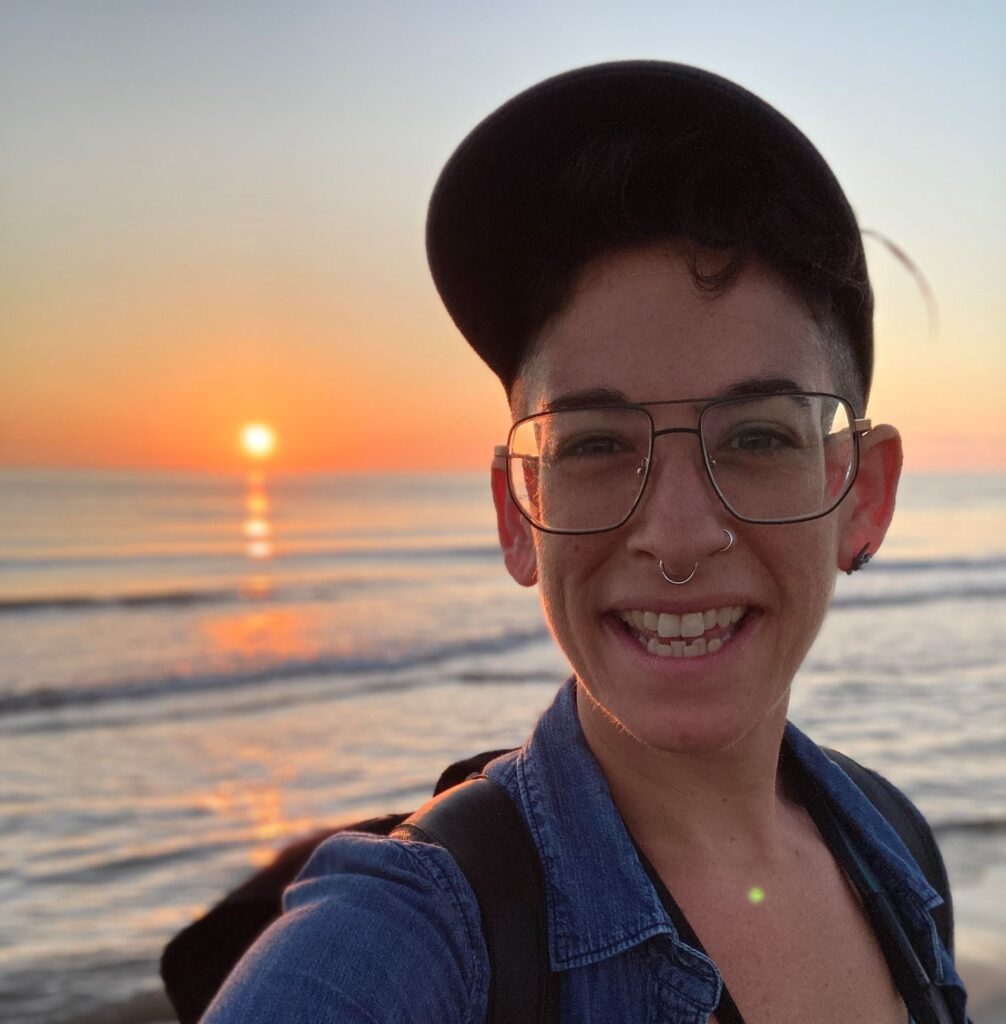
What a big topic. To backtrack a little bit on my own experience in this realm, I identify as a transmasculine and nonbinary person.
In my work as a psychotherapist, I am really committed to working with the queer and trans community of all different kinds, and, specifically, really innovating a family model around supporting trans young people. So, I see young folks as clients, and also often work with their caregivers and different folk who are a part of their family structure (whatever that may look like) in supporting their well-being and mental health and also the ways that the family system are integrating and evolving and adapting to their becoming – this really exciting process of knowing themselves more fully – including their gender identity and many other parts of their identities as well.
It’s been an interesting journey in that specific realm to notice both the impact of these really violent policies targeting trans young people in school spaces, in spaces of needing documentation and affirming medical care, and even being able to participate in out-of-school time activities in connection with their identities and the way that they see themselves. There are an increasing number of both political, legislative, and interpersonal attacks that are targeting our communities. There are really different ways that the young folk themselves are interpreting and feeling the impact of this violent campaign to sort of invisible their experience, versus how their parents are responding to this as well. And really being able to provide a holding space for both of those different experiences.
In working with young folk in particular, a lot of my work surrounds celebration and providing a type of space where not only is there belonging and connection, but where there’s also an excitement and joy that is a part of the resistance to the dominant culture enforcing the binary with such violent terminology and rhetoric and now policy as well. And really holding space for that joy in the mix of all of what it means for young folk to be discovering and exploring self.
As you were talking about celebration of idenity, I was immediately brought back to the University of Chicago Consortium on School Research’s Foundations for Young Adult Success.
This framework really identifies an overarching pathway of development for young people from early childhood to young adulthood. In particular, it talks about the way that identity formation happens.
In early adolescence, when group-based identity is developing, you see that conformity of what does it mean to fit in? We do live in a binary world; how do I fit in those binaries. Moving into middle adolescence, when you start to develop that individual identity and then all the way into young adulthood for that integrated identity – that gives so many points along the way for these young people who are really just experiencing a normal developmental process, but they’re experiencing it in such a different way than if they were a cisgender person developing their identity. And that piece around integration for example, becomes so huge.
Part II
The Three Approaches for Growth
How should schools and youth development providers really be thinking about supporting transgender youth in that identity development process, and making sure that the places and spaces last time we talked about creating positive developmental setting how are we really creating settings that are positive developmental settings for transgender young people and how does that look the same or different than for cisgender youth?
Acknowledging that there is abundant room for growth here, there are a few different approaches that come to mind for me, and I would bucket those into Infrastructure, Self Work for Adults, and a Conceptual Framework.
I think the conceptual framework that is directly about supporting transgender, gender nonconforming, and gender fluid young folk is about creating more space in all of our learning systems for fluidity – for the dynamic nature of identity, the plasticity of our minds, and the fluid ways in which we might shift between learning styles. This is a little bit out of the box, but we need to really start to grapple with the ways in which the foundation of so much of our moral and values-based structure in this society has to do with a level of control and rigidity that really restricts the beautiful creativity and dynamic unfolding that can come from figuring out how to undo those rigid structures and hold space for that very shifting moving target.
I worked in a middle school for several years running a therapy program and really tuned right into what I called identity chaos. Part of the reason that I loved being in middle school is that my expectations were that every day was going to be somewhat chaos. And they were always met.
There was sort of a comfort that I was able to lean into in that space that really moved away from having clear and concrete expectations that someone knows who they are and then we treat them that way forever, and to begin to really hold that we are creatures in development, that we are humans in a process of becoming – young people and adults alike – in these spaces.
To be able to reframe and hold some of the beauty of that unfolding is the foundational work that will create so much more space for the dynamic nature of all people, let alone those who don’t conform to the gender binary.
In terms of the self-work for adults, I noticed that there’s a real mirroring that can happen when young people show up with all of their questions and all of their unfolding of different orientations to their gender – when young folks show up stepping outside of these very policed, gender-binary boxes that we are all told and expected to fit into.
There is a generational shift. Young people are playing with and exploring more the ways that they can hold both what has been considered traditionally the masculine and the feminine in equal parts within themselves. That creates a lot of activation for adults who have had to police themselves according to those norms.
Some of what I have observed in working with adults, is the need for more safe and exploratory spaces for adults to acknowledge and engage in some self-awareness around the ways that they have policed their own gender and the ways that that process may have been harming or limiting for them.
When we look at trans and gender nonconforming young people and we see them as a symbol for the ways that we have had to become less our own selves, we treat them less well. And that I think is at the core of being able to hold a more expansive and more celebratory space of belonging for all of our kiddos in these spaces.
Then there’s also infrastructure, and that gets a lot of air time:
- having spaces where young people can use all gender restrooms,
- having spaces where young folk are invited to share about these parts of identity without having to out themselves,
- the use of gender pronoun introductions being just par for the course,
- having spaces where adults are creating really intentional and celebratory opportunities for young folk to learn about trans folks and specifically trans folks of color who have pioneered creating safe space – as our ancestors did – for this more liberatory space that young people get to occupy now.
Many of these elements are under fire and being targeted currently.
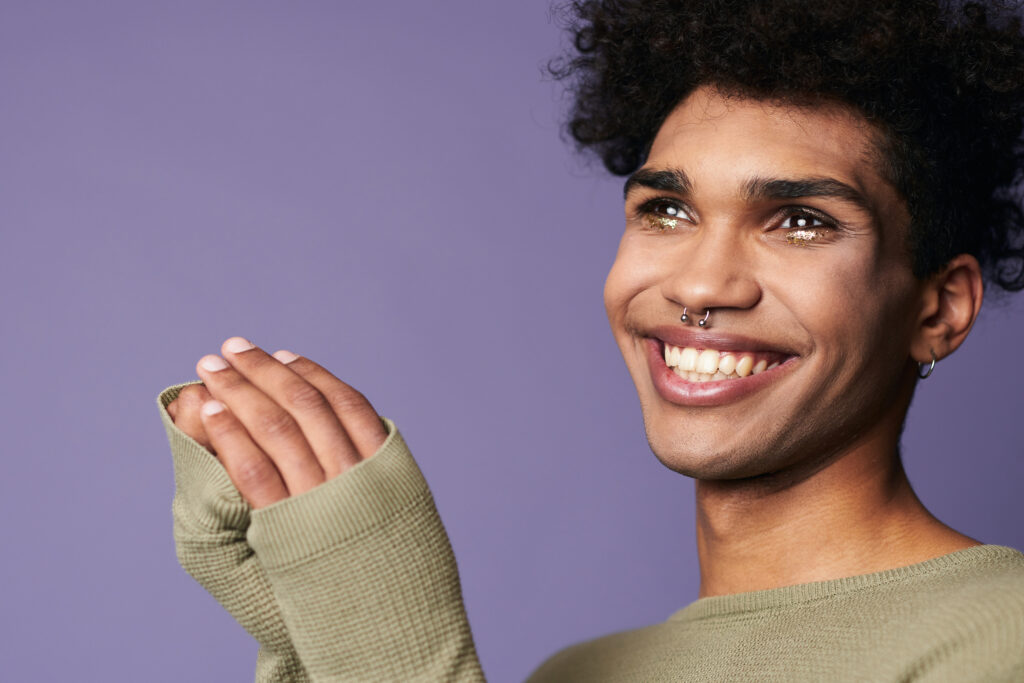
Part III
Being Prepared for those Conversations
For someone who doesn’t have your background and who isn’t a mental health professional. What might it look like for them to have a conversation with a young person who comes to them and shares that they’re exploring their identity? What recommendations do you have for a way to navigate those conversations?
I appreciate that breaking it down to the individual level: What do we do? How do we respond?
It occurs to me as I hear you ask that question that there’s such a polarization there’s such a high stakes heightened awareness of gender that that it almost like, I almost hear the absurdity in it in it to begin with in sort of a delightful way.
What would we say to a young person who said, “I’m interested in trying out field hockey?” We would say, “Wow, how interesting. You seem really excited about that.
How did you learn about that?
What are the first steps you’re imagining?
How can I support you?”
If you’re curious about gymnastics, we’re not suddenly carving out this role for you as a gymnast for the rest of your life. We’re holding space for the fact that there’s joy and there’s openness in this exploration.
I would carry out this conversation in the same way. In this process of becoming, we are all going to – I hope at some point – be in the presence of supportive adults who are curious and excited to follow that journey, as it changes as it shifts as it grows, and to offer their support along the way. And I think there’s this sort of this incredibly heightened experience around gender.
A lot of the family work that I do with parents of young folk who are exploring and being curious about the different parts of their identities with regard to gender. I can see in their parents eyes sort of thinking all the way down the line so quickly.
How am I going to keep them safe?
How am I going to make sure that I am supportive and also am seen as supportive?
There are so many complex factors that come together to make this web one of really heightened fear.
I hear myself comparing gender exploration and comparing it to starting field hockey. Do I see those as the same? No, I don’t. But I think we have a lot to learn as the adults who are receiving a young person sharing – to be able to be excited about the safety that we must have created for them to feel comfortable sharing that; to respond and to say, “I’m so glad that you came to me with that and I’m really excited to know you a yourself.” That’s what feels most important – to express that in partnership with young folk.
It takes less therapeutic training and is more of an orientation toward combating the fear, combating the agism, and combating for us as adults the forces that get in the way of seeing young people fully and coming alongside them with our hand on their shoulders
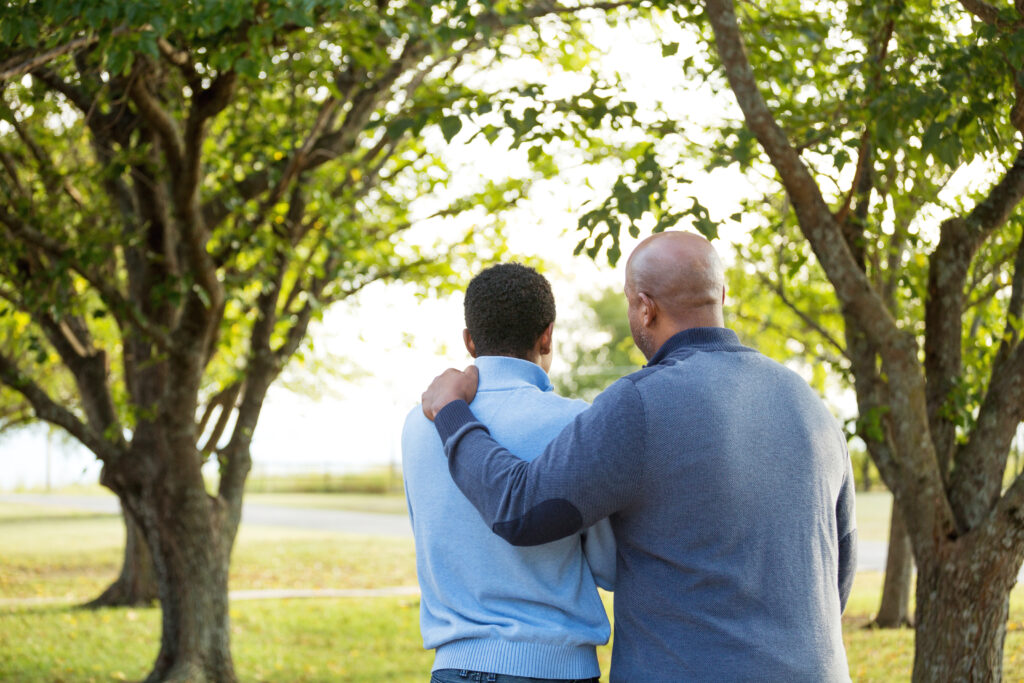
Part IV
The Kids are Alright
I’m wondering if there’s anything you would say different than what you already have for a youth development provider or for a program that wants to really be a safe space right now, knowing that so many other spaces aren’t feeling safe. Would any of your advice would change or be heightened? Or if it’s really just about doing what we know is good to do?
It’s interesting as I sit with that question what I sort of imagine as an adult in this space is actually different than what I’m hearing from young people. I’ll sort of just address both briefly. My compulsion as an adult is to say the stakes are high and for all people to hold that this is even more important than ever; that when a community is under attack, that they need the support, that they benefit from the reassurance of belonging and celebration of the courage to be themselves even more so than in other times.
What I see with the young people I actually work with is that they’re just out there doing it. That brings me back to the need for adult communities to engage in this work. The young folk I work with who are, very young adolescent and identify as trans or gender nonconforming, are kind of like, “Why are we talking about this all the time? All my friends are queer. Lots of them are nonbinary. I’m surrounded by people who reflect different parts of selves back to me, who see me fully.”
Somehow in the midst of all that is going on, the kids are all right. It’s the bravery and the courage and frankly, the hutzpah of the kiddos who are looking internally enough to really see themselves in all of their fullness and the ways that they may incorporate more than one of those binary genders.
I see the work as really for adult. I think the stakes are higher for adults to consider that every single one of us has an experience with gender. This is not just the realm of those who deviate from the binary norms or even deviate from identifying as the gender they were assigned at birth.
My call to all adults would be one of considering their own experience with gender and maybe even finding spaces to connect with other adults about the ways in which their gender has been formed, ways in which they are holding the expectations and the norms and the weight and the heaviness of how those norms have been enforced and policed over their lives.
You said it. It was what was going through my head right before you said it. The kids are all right. There is more awareness of gender exploration of the nonbinary. Kids are largely accepting of each other. They are largely able to find a community that mirrors who they are. I was also thinking about the old youth engagement refrain – Nothing about us without us. Do your adult work so then you’re really ready to engage the young people because they have the answers for us. They know what they need. We can sit and pontificate about it, but they know at the individual level and at the collective level. We just have to be ready to listen.
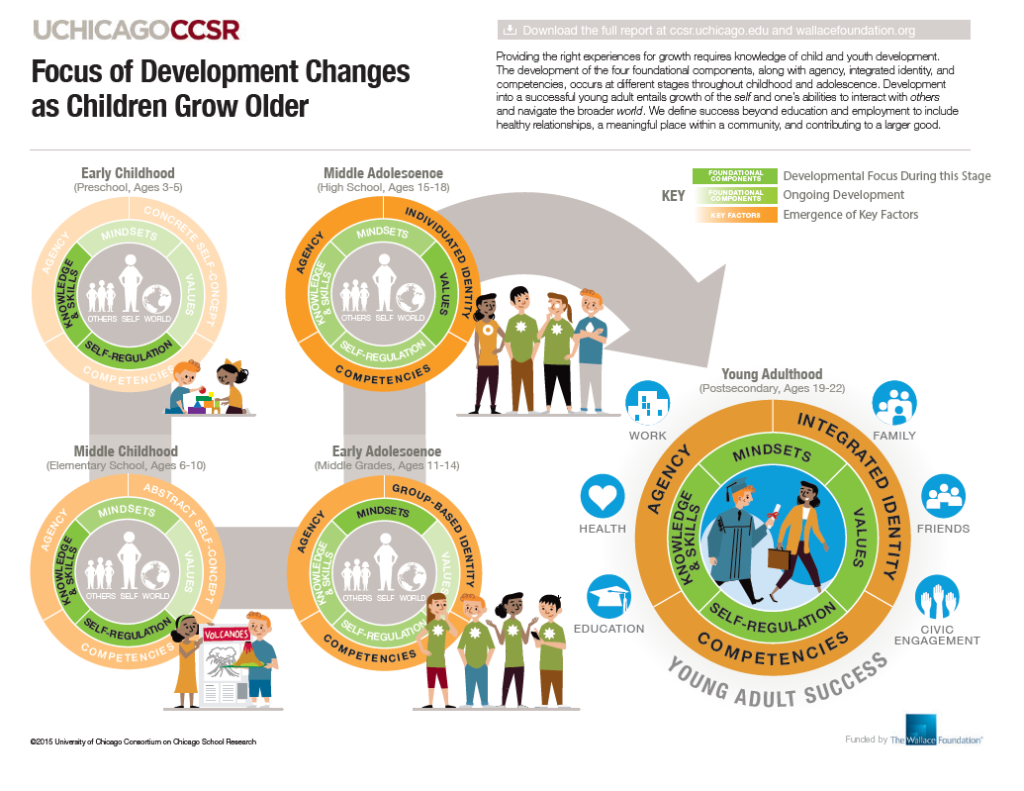
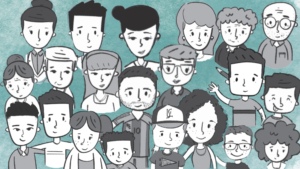

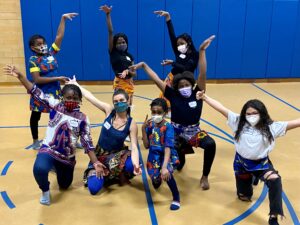
No comment yet, add your voice below!